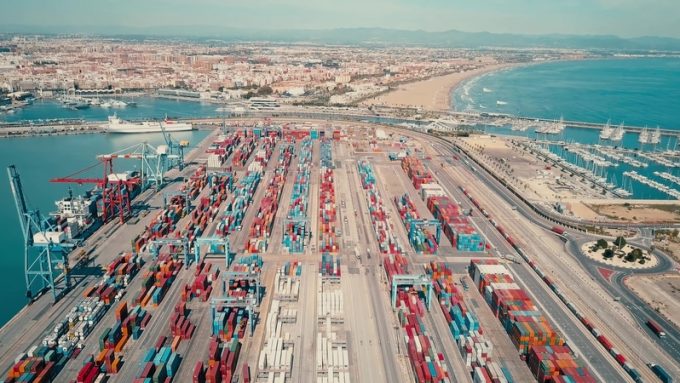Ocean Alliance carriers switch ULCVs from North Europe to the Med
Taiwanese carrier Evergreen and its Ocean Alliance partners are redeploying ultra-large container vessels (ULCVs) from ...

Often overshadowed by the larger Asia-North Europe route, the Asia-Mediterranean tradelane has so far this year proved to be slightly more robust.
According to Container Trade Statistics (CTS), westbound liftings from Asia to the west Mediterranean (including North Africa) grew 5.9% year on year to the end of May.
Moreover, Drewry said, the “laggard” Asia to east Mediterranean trade was finally showing “positive intent, following a prolonged period of contraction”, as the region bounced back to record 0.6% headhaul growth in the first five months of the year, compared with a 1.5% decline in volumes in 2018.
Cumulatively, Asia to Med headhaul trade grew 3.1% in the period versus the weak 0.6% expansion seen the year before.
Drewry said: “Container traffic from Asia to the Mediterranean appears to have been given a lift as China redirects more exports to other markets to compensate for the fall in traffic to the US.”
It added that much of the growth had derived from an increase in Spanish imports, which it suggested had been given a “fillip from a substantial hike to the country’s minimum wage at the start of the year”.
Indeed, after having been ravaged by recession after the global financial crisis of 2008/09, resulting in unemployment levels in excess of 25% and youth unemployment nudging an horrendous 40%, the Spanish economy is now one of the few bright lights of the European economic region.
And, responding to the positive economic data, Bank of Spain has hiked its annual growth forecast from 2.2% to 2.4%, which compares with the sluggish wider European expansion expectation of just 1.4%.
However, although Drewry said the CTS data was “encouraging”, it added that Asia-Med headhaul growth for the rest of the year was “unlikely to be rapid”.
The consultant said the main reason for this cautious outlook was the still-fragile nature of the Turkish economy, the biggest importer of Asian goods in the region, which it said was still suffering the impact of its currency crisis last year.
On the supply side, Drewry said westbound capacity in the first six months of the year had been kept below the level of the same period of 2018, which it attributed to the suspension of Zim’s ZMP loop that had counteracted the upgrade of three alliance services.
It noted that westbound vessel utilisation levels in May had recovered to about 90%, from an 85% average in the second quarter, and that the capacity surplus had acted as a drag on spot container rates, in a similar fashion to the situation for North Europe.
According to Friday’s reading of the Shanghai Containerized Freight Index (SCFI), Mediterranean spot rates stood at $695 per teu, compared with $672 per teu for the north Europe route.
And, in parallel with the plight of the North Europe carriers, rates on the route have slumped by some 30% since the beginning of the year and remain some 20% lower than the same period a year ago.
Although Asia-Med was a trade “on the mend”, Drewry said it expected growth during the rest of the year to be “fairly modest”.
Nevertheless, carriers might find a “modest expansion” to be a satisfactory result, compared with some of their other regional activity.
Comment on this article